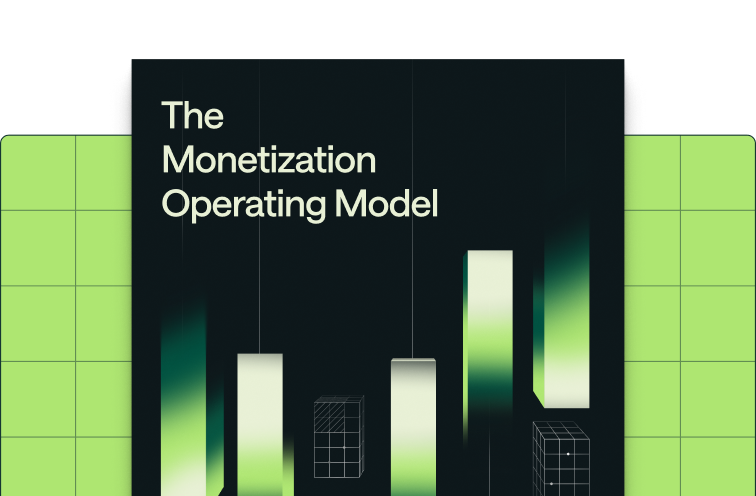Share
AI companies face a brutal reality: underpricing creates immediate margin pressure unlike traditional SaaS pricing flexibility, with AI companies operating at 50-60% margins compared to 60-80%+ for traditional SaaS, yet most teams still approach price increases like apologetic afterthoughts instead of strategic value realignments.
The ground has shifted beneath pricing strategies. What worked for predictable subscription models breaks completely when value delivery becomes dynamic and AI-driven.
AI infrastructure costs create immediate margin pressure that can't be deferred like traditional SaaS pricing adjustments. Around 78% of SaaS companies made pricing and packaging changes in 2023, yet most lack infrastructure for rapid iteration. Companies avoiding necessary increases leave money on the table while modern software buyers increasingly expect pricing aligned with value delivery.
The window is narrowing. About 85% of companies now implement usage-based pricing as pricing agility becomes competitive advantage. Price increases aren't just revenue adjustments: they're strategic opportunities to align value with outcomes when executed through proper infrastructure.
Why price increases fail without systematic infrastructure
Price increases fail because companies optimize for revenue extraction instead of customer value alignment, treating pricing as an annual event rather than continuous product capability.
Legacy billing systems force binary choices between rigid models instead of flexible value-based adjustments. Engineering teams become bottlenecks for pricing changes, turning strategic decisions into multi-sprint projects that delay product development.
Value remains invisible to customers through disconnected usage tracking and manual reporting processes. Companies lack safe experimentation capabilities, making every adjustment feel like a permanent gamble.
While 77% of the largest software companies still incorporate consumption-based pricing using infrastructure not designed for complexity, AI drives fundamental shifts toward outcome-based pricing.
The engineering bottleneck problem
Engineering teams spend months implementing pricing changes that should take minutes. Every rate adjustment becomes a three-sprint project that delays product features.
Take Fly.io, for example. They experienced exactly this challenge before partnering with Metronome. As Jon Phenow, Staff Software Engineer at Fly.io, shared: "I don't think we fully realized how simple the flexibility Metronome 2.0 offered would be. That 'one change to change them all' idea was a huge wakeup call."
The competitive impact
The competitive impact compounds over time: AI-native companies launch with usage-based models while others struggle to retrofit systems, and revenue forecasting becomes unreliable when usage patterns diverge from seat-based predictions. This is why pricing experiments shouldn't break finance operations.
Companies with modern pricing infrastructure respond to market changes in hours instead of quarters. They adjust pricing faster than competitors, configure new packaging models instantly when customers request them, and capture expansion revenue as it happens.
Meanwhile, legacy operators manage complexity through rigid pricing systems and manual processes. They recognize the need for pricing evolution but struggle with execution because every change breaks something, and every experiment requires months of coordination.
The strategic value-aligned pricing framework
Successful price increases require treating pricing like product deployments: systematic, data-driven, and supported by proper infrastructure rather than ad hoc decisions.
Modern companies understand that pricing is a product requiring ongoing iteration, investment in systems enabling rapid experimentation without operational risk, and measurement of pricing performance with the same rigor as product metrics.
Ground increases in real usage data and value patterns
Price increases must connect to measurable customer value delivery through systematic data analysis rather than internal cost pressures.
Building a data-driven foundation for price increases requires systematic analysis across multiple dimensions:
- Analyze usage patterns and value realization using granular product analytics and billing data
- Map pricing changes to specific value improvements customers can quantify
- Segment customers based on value delivery patterns rather than demographics
- Implement transparent rate card systems that clearly connect usage metrics to billing outcomes
- Leverage real-time analytics to identify customers receiving disproportionate value from current pricing
This systematic approach ensures pricing adjustments reflect actual customer value rather than internal assumptions.
For example, if your AI service processes 50 emails for one customer and 5,000 for another, your pricing increase should acknowledge this variance. The customer processing 5,000 emails receives significantly more value and can support higher rates when the increase aligns with their outcomes.
Cribl demonstrates this approach effectively. As Manish Bhaskar, Cribl Director of Product Management, explained: "With Metronome's flexibility, we created a new plan for all our customers on Cribl.Cloud within minutes. It literally took us minutes: not hours, not days, not weeks. The same thing if we had built it from scratch would have taken an extensive engineering approach that would have taken a month."
Design infrastructure-enabled price adjustments
Modern pricing requires flexible systems that enable rapid iteration without compromising customer trust. This infrastructure prevents situations where pricing breaks the product experience. Essential infrastructure capabilities include:
- Structure pricing through configurable rate cards rather than hardcoded billing systems
- Enable safe pricing experimentation with A/B testing and automatic rollback mechanisms
- Implement versioned pricing plans that support grandfathering and progressive rollouts
- Build pricing governance with clear approval workflows and cross-functional visibility
- Abstract pricing logic from engineering dependencies while maintaining financial-grade accuracy
These capabilities transform pricing from an engineering bottleneck into a business capability that can evolve with product development cycles.
OpenAI exemplifies this transformation. As Peter Welinder, VP of Product and Partnerships at OpenAI, noted: "Metronome has been an essential billing partner on our journey to bring the world products loved by millions of developers." OpenAI leveraged Metronome to move from a homegrown, manual billing solution to an automated billing platform that enables quick product launches and easy pricing management.
Execute through confident value communication and real-time transparency
Price increase communication succeeds through confident value framing combined with infrastructure that enables customer trust through transparency. Pricing transparency becomes essential when customers need to understand how changes affect their costs and can see clear connections between pricing and value delivery.
Successful price increase execution requires coordinated communication and transparency tools:
- Frame increases around delivered value improvements and competitive positioning rather than internal costs
- Provide 30-day advance notice with specific dates and clear pricing details
- Create customer-facing dashboards showing usage consumption, current spend, and projected costs in real-time
- Implement spending controls and usage alerts preventing bill shock and maintaining customer agency
- Offer transition options for different segments while maintaining unified pricing logic
- Enable self-service capabilities for adjusting usage limits, upgrading plans, or modifying billing preferences
This comprehensive approach builds customer trust while enabling smooth transitions to new pricing structures.
Communicate value, not costs
Focus communication on the value delivered rather than internal cost pressures. Explain how new features, improved performance, or enhanced outcomes justify the pricing adjustment. Customers understand paying more for better results, but resist subsidizing operational inefficiencies.
This approach aligns with how AI is rewriting traditional SaaS pricing models to reflect actual value delivery rather than access-based pricing.
Provide transparency tools
Real-time usage dashboards become critical during price transitions. Customers need to see exactly what they're consuming and how the new pricing affects their costs. Transparent billing builds trust and reduces disputes.
Enable customer control
Give customers tools to manage their costs under the new pricing. Usage alerts, spending limits, and optimization recommendations help customers adapt to pricing changes while maintaining their preferred service levels.
From operational burden to strategic advantage
The companies that succeed long-term implement price increases as strategic improvements rather than tactical adjustments. They build infrastructure that connects product usage, pricing logic, and billing execution in real time.
Whether you choose gradual rate adjustments or comprehensive pricing model transitions, success depends on three foundational elements: clean data pipelines that capture true value signals; flexible pricing infrastructure that separates business logic from engineering constraints; and transparent customer experiences that build trust through predictable communication.
Price increases executed through proper infrastructure don't damage customer relationships: they strengthen them by aligning costs with value delivery. Customers understand what they're paying for, can predict future costs, and see clear connections between their usage and their bills.
The companies that master this approach, like DataStax, transform pricing from a constraint into a competitive advantage that captures value while building customer trust.
The future belongs to companies that can price as dynamically as they ship features. Price increases, powered by the right infrastructure, transform from necessary evils into competitive advantages that capture value while building customer trust.
Ready to build pricing infrastructure that turns complexity into competitive advantage? Get early access to "The Monetization Operating Model" whitepaper for the complete framework on systematic pricing strategy execution.
{{widget-monetization-whitepaper}}










